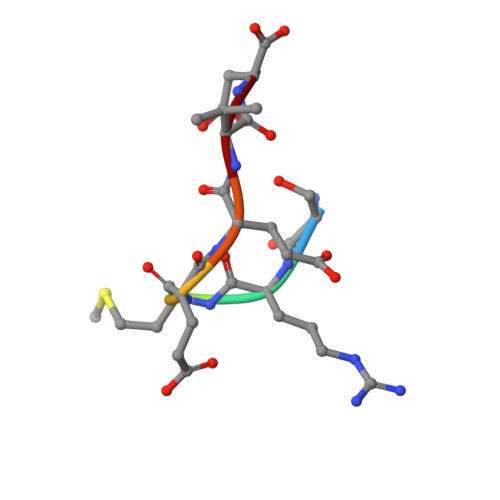Tah1 Helix-Swap Dimerization Prevents Mixed Hsp90 Co-Chaperone Complexes
Morgan, R.M.L., Pal, M., Roe, S.M., Pearl, L.H., Prodromou, C.(2015) Acta Crystallogr Sect F Struct Biol Cryst Commun 71: 1197
- PubMed: 25945584
- DOI: https://doi.org/10.1107/S1399004715004551
- Primary Citation of Related Structures:
4CGQ - PubMed Abstract:
Specific co-chaperone adaptors facilitate the recruitment of client proteins to the Hsp90 system. Tah1 binds the C-terminal conserved MEEVD motif of Hsp90, thus linking an eclectic set of client proteins to the R2TP complex for their assembly and regulation by Hsp90. Rather than the normal complement of seven α-helices seen in other tetratricopeptide repeat (TPR) domains, Tah1 unusually consists of the first five only. Consequently, the methionine of the MEEVD peptide remains exposed to solvent when bound by Tah1. In solution Tah1 appears to be predominantly monomeric, and recent structures have failed to explain how Tah1 appears to prevent the formation of mixed TPR domain-containing complexes such as Cpr6-(Hsp90)2-Tah1. To understand this further, the crystal structure of Tah1 in complex with the MEEVD peptide of Hsp90 was determined, which shows a helix swap involving the fifth α-helix between two adjacently bound Tah1 molecules. Dimerization of Tah1 restores the normal binding environment of the bound Hsp90 methionine residue by reconstituting a TPR binding site similar to that in seven-helix-containing TPR domain proteins. Dimerization also explains how other monomeric TPR-domain proteins are excluded from forming inappropriate mixed co-chaperone complexes.
- Genome Damage and Stability Centre, School of Life Sciences, University of Sussex, Falmer, Brighton BN1 9RQ, England.
Organizational Affiliation:



















